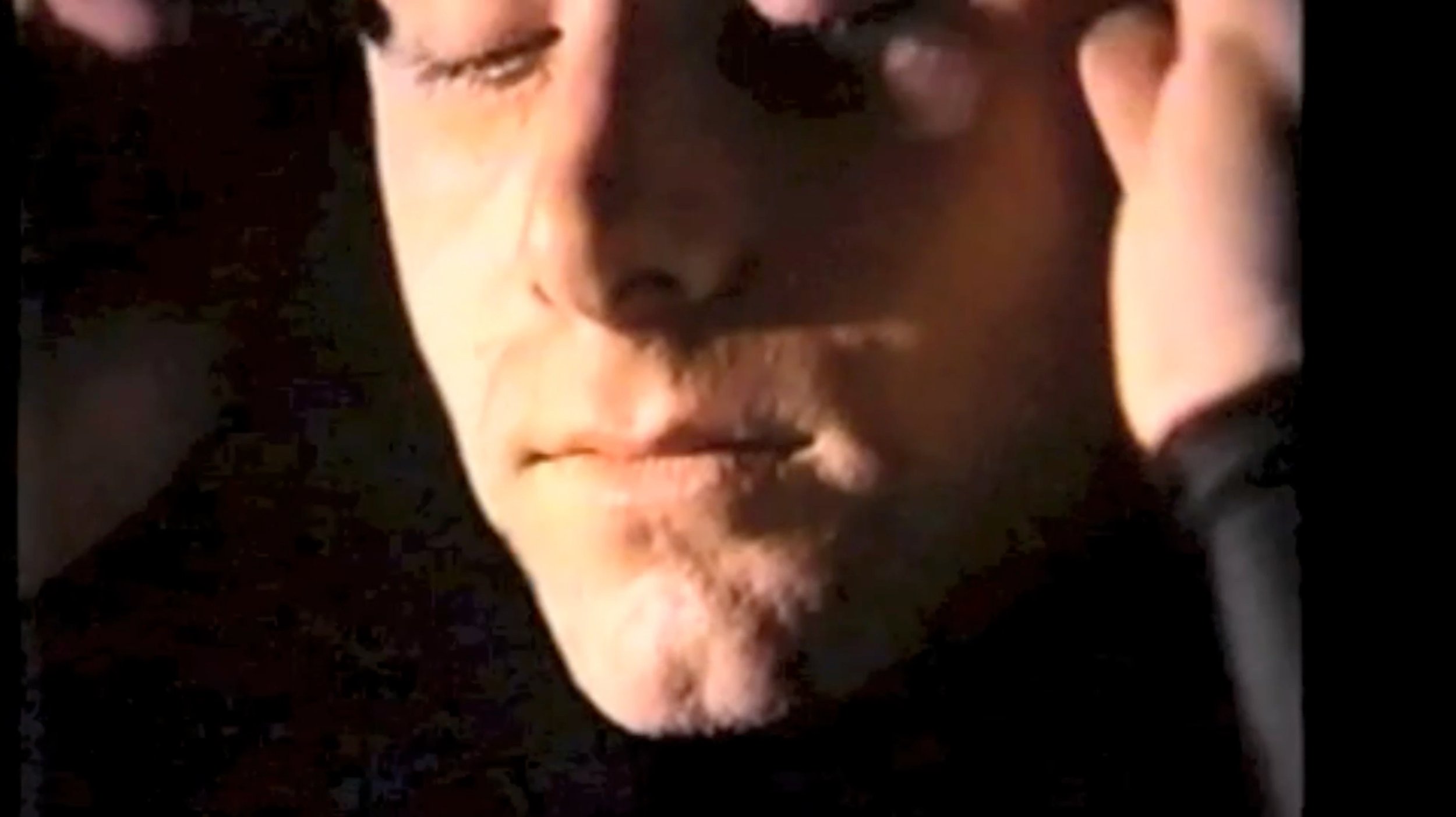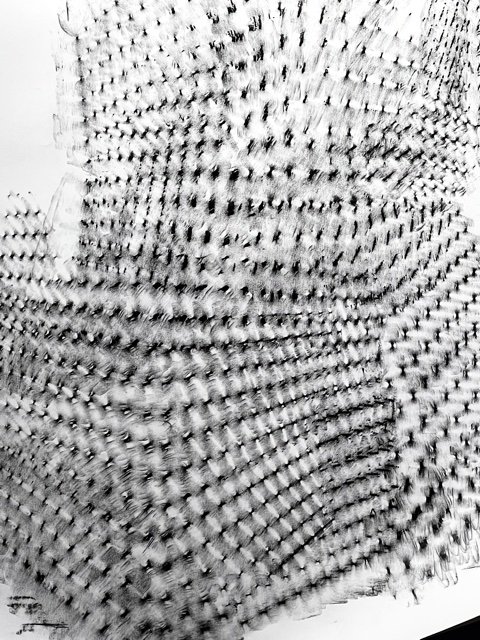
NEWS
Spatial Frequencies
Premiering at the MIT Museum fall 2022 | Learn more on the MIT Museum website
Oil stick on paper
A collaborative project by the MIT Museum Studio: Adam Burke, Adam Horowitz, Seth Riskin, Sarah Schwettmann, Matej Vakula with Yuting Wang.
The “grid plate” used to develop Spatial Frequencies is cut with a computer-controlled milling machine. The relief pattern represents information of a 3D object reduced to low spatial frequency, points that encode depth and form in their size and spacing. The bumps steer and otherwise influence the application of the drawing medium onto the paper surface. Like running one’s finger over the relief pattern, the discoveries made with the oil stick are local, evidenced as points, lines, and gradients of light and dark. These contrast units interrelate in perception as the eye explores the drawing, activating the brain’s low-level visual processing, stimulating without constraining higher-level, perceptual and cognitive constructions.
Fabrication support from Hayami Arakawa, Chris Dewart, James Hunter, Coby Unger. Thanks to Professor Pawan Sinha, light source in our community of learning at the intersection of art and neuroscience.
These drawings explore connections between visual art, vision neuroscience and computational methods of representing and understanding human vision.
Motivation for the project was found between two strands of creative activity historically connected to MIT: Sol Lewitt’s method of algorithmic wall drawing (#122 in 1972) that contributed to conceptual and minimalist art and David Marr’s modeling of vision as an information processing system (1973-80) that laid foundation for computational neuroscience.
In drawing and seeing, structure is built from “signals,” simple patterns of light and dark such as points, lines, and gradients. The first stages of visual perception may be thought of as inverse drawing: the eye is always in motion, sweeping low-level light information over the photosensitive cells of the retina that feed the brain’s construction of a world in experience. While drawing and vision are both constructive processes, drawing leaves a physical trace, allowing viewers to share something of the artist’s experience.
An unusual method is used for encoding perceptual cues into the drawing. A relief pattern set underneath the paper imparts structure to the marks made on the surface. Local variations in contrast are used by the visual system as building blocks of perceptual construction. As the eye traces over the drawing, percepts of edges, textures, spatial depth and geometric solids form and dissolve across scales, suspending the viewer between experiences of perceptual inference and perceptual ambiguity.






